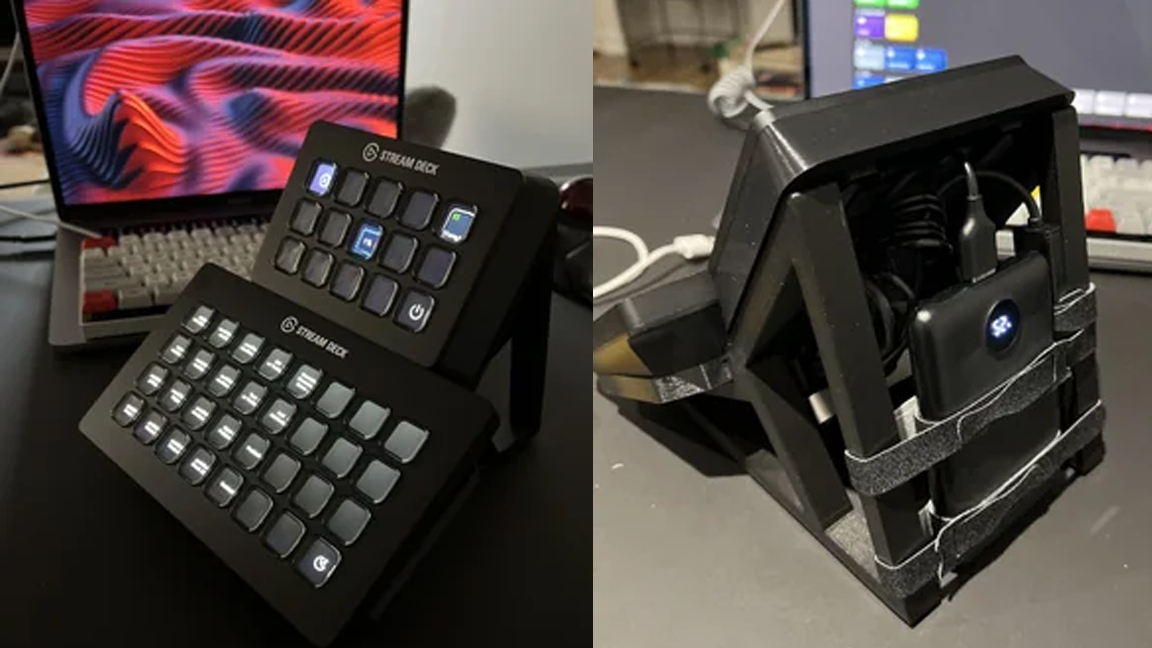
If there’s one thing the Raspberry Pi is good for, it’s adding features to hardware that weren’t there before. That seems to be the case here with this Raspberry Pi project created by a maker known as Mad Patter over on Reddit. Using one of our favorite SBCs, the Raspberry Pi Zero W, Mad Patter has managed to make their dual Stream Deck setup completely wireless. With it, you can connect to the Stream Deck rig without a cable in sight (they’re tucked underneath with velcro, along with a battery pack).
According to Mad Patter, they like to use Stream Decks for automating workflow throughout the day. Having one within reach is very useful but not so much with cables in the way taking up valuable USB ports. After playing around with a Pwnagotchi, a Pi Zero-based AI project that uses wireless to interface, Mad Patter decided the Stream Deck could use a little wireless functionality as well.
The project consists of two Stream Decks, a Stream Deck MK.2 and a Stream Deck XL. These two are mounted together in a custom 3D-printed stand ordered from Etsy. The stand has plenty of room underneath the Stream Deck boards, which Mad Patter decided would be the perfect place to put a Pi Zero W into the picture.
The Pi Zero W mounts easily underneath while providing plenty of room for a few extra components. It also includes a 4-port USB hub as well as a 10,000 mAh power bank. Mad Patter explains that the power bank should, in theory, last for up to 20 hours, but this may be a generous estimation as the battery life has not been tested with the setup yet.
The Pi Zero W is running Raspberry Pi OS along with a network USB server application called VirtualHere. This allows users to connect to the Stream Deck setup over the network as if they were connected to the machine. A client is required for the target machine to connect to the system. An alternative application was considered called USBIP, but VirtualHere was chosen for its Mac support.
Overall, this is a wonderfully clever project and we appreciate the work put into making it. If you’d like to recreate it or just get a closer look at how it goes together, check out the original project thread shared to Reddit, and be sure to follow Mad Patter for any future updates.







